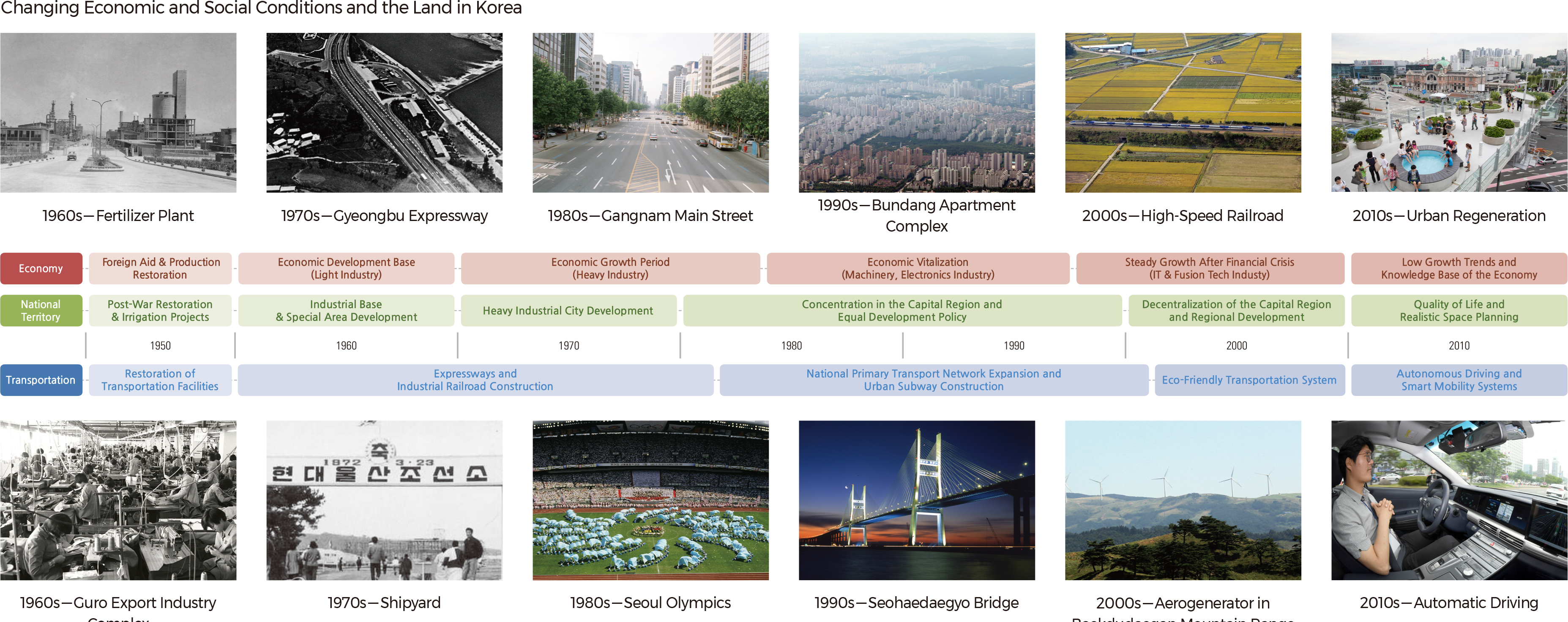English I 2019
Korea’s spatial planning has greatly advanced since 1960. Spatial planning is a standardized and refined framework that is utilized to maximize the efficient use of Korea's territorial land and water bodies. Spatial planning is also a key component in the Comprehensive National Territorial Plan (CNTP), regional development plans, and comprehensive city/county plans. Spatial planning intends to seek balanced approaches to land development, to enhance regional competitiveness, and to pursue environmentally friendly land management.
More specifically, the CNTP is a master plan that aims to effi-ciently manage territorial land resources in a manner that is compatible with the primary direction and underlying strategies of national policies. The first CNTP (1972–1981) was implemented in 1971; it was followed by the second CNTP (1982–1991), the third CNTP (1992–2001), and the fourth CNTP (2000–2020). Because of rapid economic growth and urbanization in Korea, national development progressed in an unbalanced manner, and in order to narrow regional development gaps, various regional development plans, such as the enterprise city, innovative city, and multifunctional administrative city plans, have been designed and implemented. More recently, a five-year regional innovative development plan has been executed to promote local economic self-reliance through regionally specialized development. A district development promotion plan has been applied to areas that remain significantly underdeveloped. A culture and tourism development plan has also been prepared to help foster more distinctive regional development projects.
Another crucial element of Korea’s spatial planning system is the urban planning system, which was designed to be compatible with the CNTP. The urban planning system encompasses area-wide regional plans, city/county master plans, city/county management plans, and district unit plans.
Currently, the Fifth National Territorial Comprehensive Plan for 2040 is being established. It is a strategic plan for realizing people's hope for a safe, balanced, and clean national territory. In addition, as part of the 300,000 housing provision plan to stabilize the housing market in the Seoul metropolitan area, five new towns have been designated, and their development is underway. The urban regeneration policy of 2007 has been promoted in earnest since 2017 with Urban Regeneration New Deal projects. |
